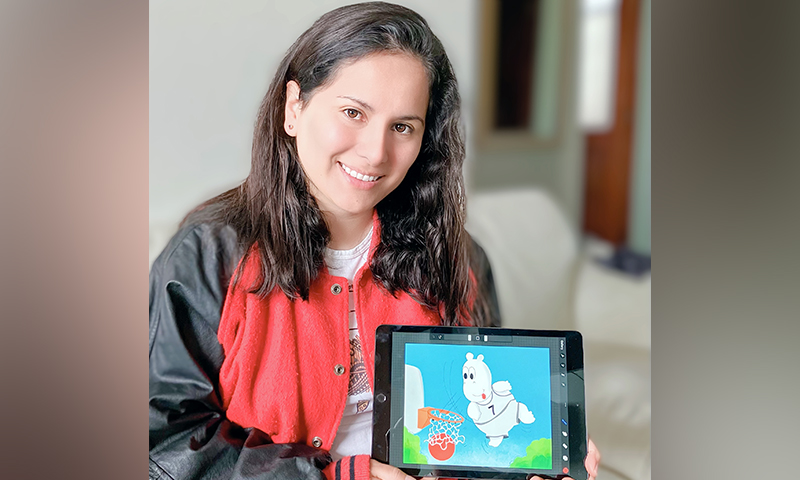Tatiana is a certified professional in Virtual Education and E-learning. With more than 11 years of professional experience in the field of education, startups, and digital marketing, she has developed a project for the integration of blockchain technology in education, in which she sees great potential for the future. She explains that “this technology can revolutionize the way we live and can contribute to the diffusion of new educational paradigms.” She is also a graduate of the University of San Martín de Porres in Lima, Perú.
Artificial intelligence (AI) is rapidly becoming an integral part of many aspects of our lives, and education is no exception. As AI technology continues to advance, it is empowering students and teachers in a variety of ways, from improving the learning experience to making it easier for educators to do their jobs.
One of the key ways that AI is empowering students is by providing them with personalized learning experiences. Traditional education often follows a one-size-fits-all approach, where students are expected to learn the same material at the same pace as their peers. However, this can be frustrating for many students, as they may not be able to keep up with the pace of the class or may find the material too easy or too challenging.
AI-powered learning platforms, on the other hand, can adapt to each student’s individual needs and learning style. These platforms use data analysis and machine learning algorithms to assess a student’s strengths, weaknesses, and learning preferences and then provide them with personalized content and feedback to help them progress at their own pace. This not only makes the learning experience more enjoyable for students but also helps them to retain more information and develop a deeper understanding of the material.

Another way that AI is empowering students is by providing them with access to a wider range of educational resources. In the past, students were often limited to the materials that were available in their schools or libraries. However, with the advent of the internet and AI, students can now access a vast array of educational resources from anywhere in the world.
AI-powered search engines, such as Google, can help students quickly and easily find relevant and high-quality educational content on a wide range of topics. For example, a student who is studying ancient history can use a search engine to find articles, videos, and images about the topic, as well as primary sources such as historical documents and artifacts. This not only provides students with access to a greater variety of materials but also allows them to learn from a wider range of perspectives and sources.
Another way that a student can use artificial intelligence (AI) for learning is by using an AI-powered learning platform. These platforms use data analysis and machine learning algorithms to assess a student’s strengths, weaknesses, and learning preferences and then provide them with personalized content and feedback to help them progress at their own pace.
For example, a student who is studying history may use an AI-powered learning platform to learn about different historical events and figures. The platform may start by asking the student a series of questions to assess their current knowledge and understanding of the topic. Based on the student’s answers, the platform may then provide them with personalized content and activities to help them learn more about the topic.
For instance, the platform may provide the student with articles and videos about specific historical events or figures, as well as interactive quizzes and games to help them test their knowledge and reinforce their learning. As the student progresses through the material, the platform may continue to assess their performance and provide them with feedback and recommendations for further learning.

In addition to providing personalized content, the AI-powered learning platform may also connect the student with other students and teachers who are studying the same topic. This can provide the student with additional opportunities to learn from their peers and experts in the field, as well as to share their own knowledge and experiences.
Overall, using an AI-powered learning platform can be a valuable way for a student to learn about a specific topic in a personalized and engaging way. By providing personalized content, feedback, and connections to other learners and experts, an AI-powered platform can help a student to develop a deeper understanding of the material and to retain more information.
In addition to empowering students, AI is also helping teachers to do their jobs more effectively. One of the key challenges faced by teachers is the ability to provide personalized feedback to each of their students. With large class sizes and limited time, it can be difficult for teachers to give each student the individual attention that they need to improve their skills and knowledge.
AI-powered tools, such as grading software and feedback systems, can help teachers to provide personalized feedback to their students more quickly and efficiently. For example, a teacher can use a grading program to automatically assess students’ work and provide them with feedback on their performance. This not only saves teachers time and effort but also allows them to provide more detailed and accurate feedback to their students.
Another way that AI is helping teachers is by providing them with access to a wider range of educational resources and tools. For example, AI-powered platforms such as Khan Academy and Coursera offer a wide variety of online courses and resources that teachers can use to enhance their teaching and provide their students with additional learning opportunities. These platforms not only provide teachers with access to a wealth of educational materials but also offer them the chance to connect with other teachers and experts in their field.
Overall, AI is empowering students and teachers in a variety of ways. By providing personalized learning experiences, access to a wider range of educational resources, and tools to help teachers do their jobs more effectively, AI is helping to enhance the quality of education and improve the learning experience for students around the world. As AI technology continues to advance, we can expect to see even more innovative and effective ways in which it will be used to empower students and teachers.




